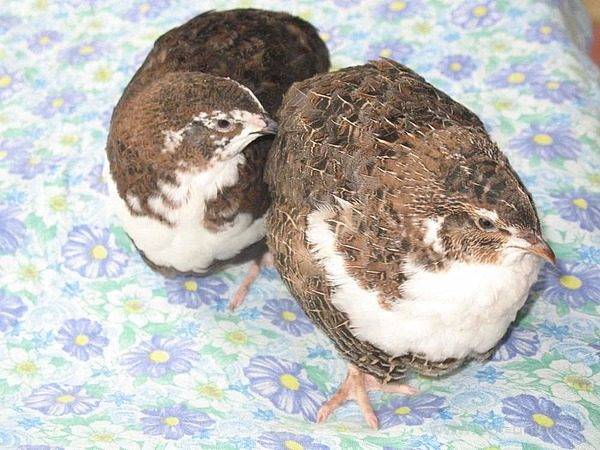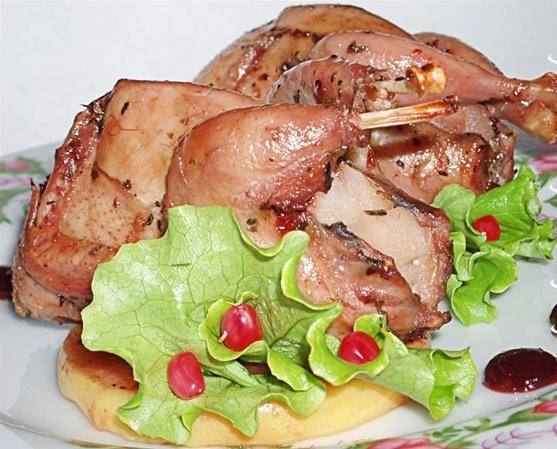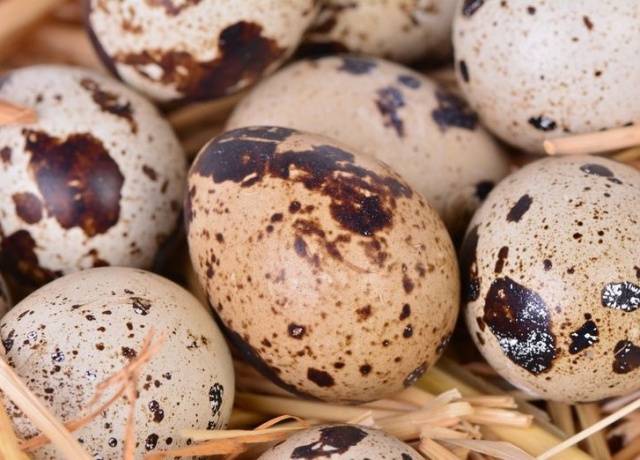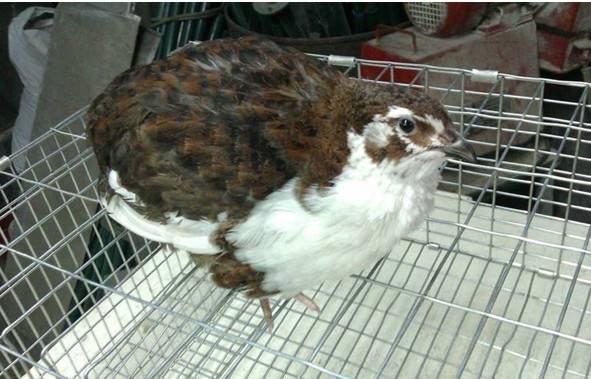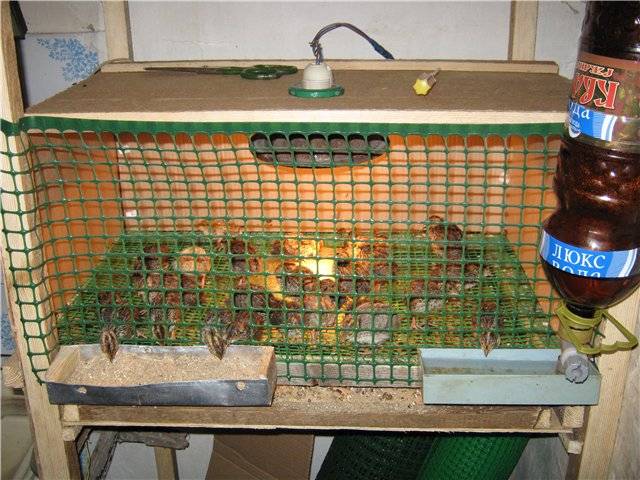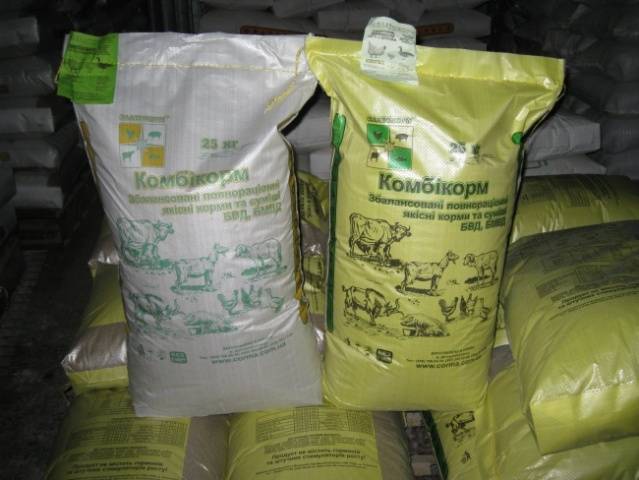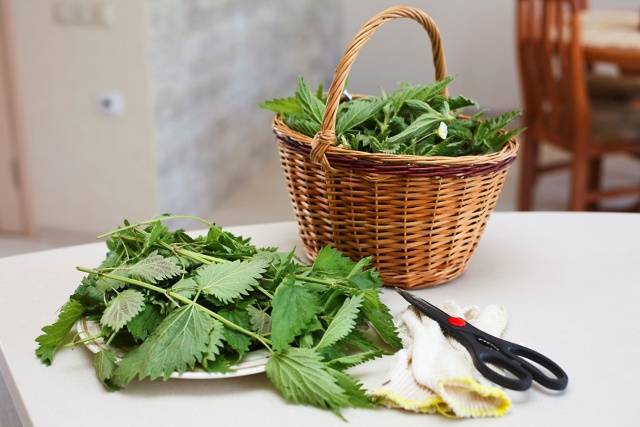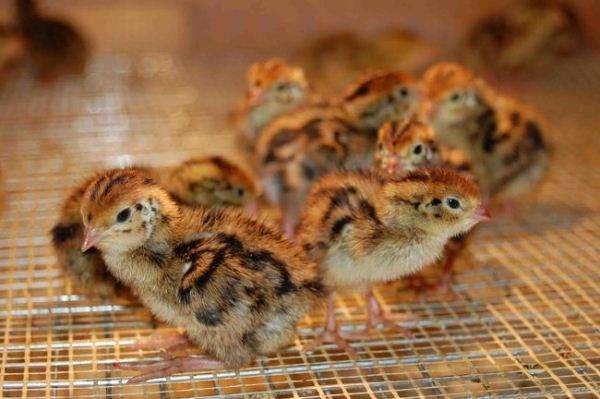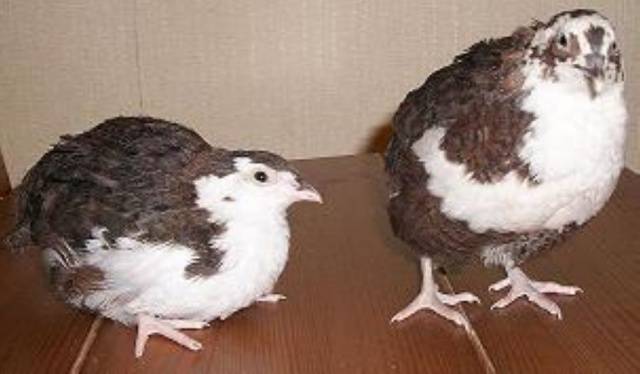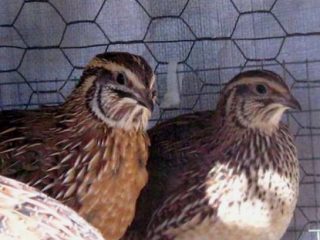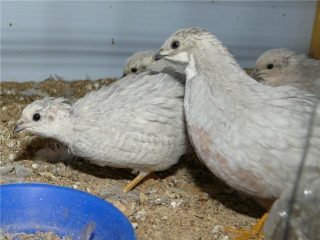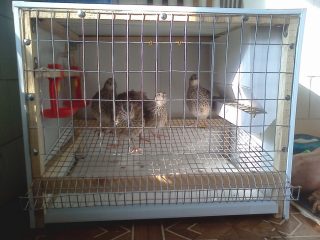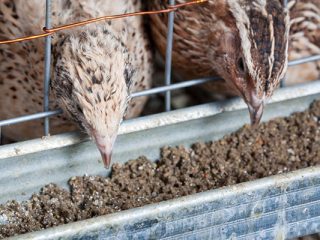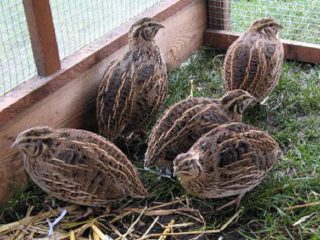Tuxedo quail obtained by crossing English black and white quails. The result is a new breed of birds with an unusual coloring that attracts the eye: a dark brown back and white neck, breast and lower body. It resembles a tuxedo, hence the name of the breed.
The description of tuxedo quails indicates the following characteristics: they have an egg-meat direction, the live weight of females reaches 160 g, in males it is less, up to 150 g. At the same time, female tuxedo quails, starting from 40 days of age, lay quite a lot of eggs, at least 280 pieces per year, weighing 10 g.
Benefit
Quail meat is a valuable dietary product and is classified as a delicacy. Tuxedo quail meat is high in calories and is valued much higher than chicken and rabbit meat, as it has high taste. It was not for nothing that quail carcasses were served on the table of kings and nobles. In Rus', quails were caught by hunting.
By eating quail meat regularly, you can significantly improve your health. It is prescribed as a therapeutic food for diseases of the heart, liver, kidneys, and lungs. The meat contains potassium, phosphorus, and B vitamins, which improve the condition of the nervous system. Quail meat is indicated for pregnant women, growing bodies, and people leading an active lifestyle.
Due to the presence of iron and vitamin PP, which improve blood composition and normalize the functioning of the heart and blood vessels, tuxedo quail meat is included in the diet for anemia and in the diet of older people. Quail meat can be consumed by patients with diabetes, as it is well absorbed without loading the pancreas.
Tuxedo quail eggs are superior in value to chicken eggs. They contain essential amino acids and fatty acids that our body does not produce, but they are necessary for the balanced functioning of the body. Quail eggs contain a significant amount of B vitamins, vitamin A, magnesium, and iron. Quail eggs should be consumed for prevention and in the presence of anemia, headaches, problems with the stomach and intestines, and diabetes.
Tuxedo quail eggs and meat do not cause allergic reactions. The description of the beneficial properties can be continued for a long time. Of course, eating quail products is not a panacea, but it is quite possible to improve the condition of the body. Quail eggs store well; at room temperature they do not spoil for a month; they can be stored in the refrigerator for more than 2 months.
Content
Currently, more and more people are trying to lead a healthy lifestyle and eat the right natural products. The demand for quail eggs and meat is growing every year. Perhaps for someone quail breeding will become a profitable business, others will begin to breed quails for themselves. Getting started does not require large financial investments, and results can be obtained fairly quickly.
Tuxedo quail are for those breeders who are interested not only in high meat and egg production, but also in the appearance of the birds.
Tuxedo quail, like other breeds, are kept in cages. The room where the cages will be located must be warm, heated in winter, well lit and ventilated, but without drafts.
At this age, tuxedo quails better tolerate moving and adaptation to a new place. It is better to start a quail family: 4 females and 1 male. They need a cage measuring 30x30 cm and no more than 25 cm high.
A more spacious cage will negatively affect the egg production of tuxedo quails. Do not build nests; the birds will fly straight to the floor. Lay straw, sawdust, shavings or newspaper on the floor of the cage.
Clean cages regularly. The main thing is that they are not damp and do not smell of bird droppings, especially if you intend to keep quails in a city apartment.
Tuxedo quails love to take sand baths; place a container of sand inside the cage about once a week. The bathing procedure helps birds get rid of parasites.
If the birds have stopped laying eggs, then perhaps there is low humidity in the room. You can place containers of water near the cages, but do not overdo it. High humidity does not have the best effect on tuxedo quails.
Light Requirements: Tuxedo quail need 17 hours of daylight. If there are windows in the poultry house, summer and spring daylight is sufficient, but in winter additional lighting will be required. If the lighting is too bright, birds become aggressive and can harm each other. How to equip a quail cage, watch the video:
Feeding
Cages for tuxedo quails should be equipped with drinkers and feeders. They need to be attached from the outside so that the quail can stick their heads through the holes in the cage. This is done to save feed. Inside the cage, birds scatter more food than they consume.
Tuxedo quails are kept primarily for their eggs. Therefore, feeding must be adequate to maintain high egg production. Each female tuxedo quail should receive 25 g of feed per day. Feeding with compound feed is most convenient. But at the same time, add proteins or animal feed to the birds’ diet: cottage cheese, meat and bone meal, fish or fish meal, yogurt.
Instead of feed, you can use mixtures of crushed grains of several types: millet, wheat, corn, oats, barley, grain bran. Tuxedo quails eat grated carrots very well, especially in winter. In the spring, as soon as the first greens appear, begin to include them in the quail’s diet. Chop the nettles, dandelion leaves, and onion feathers with a knife.
The diet must contain calcium and essential microelements, which is important for the formation of egg shells. Crushed river shells, chalk, limestone, eggshells are sources of calcium. In addition, tuxedo quail require small pebbles to help them grind up rough food.
It is best to feed quails twice. Before slaughter, it is recommended to fatten tuxedo quails for a month. Then they are fed more often, 4 times a day, reducing the lighting.
Raising young animals
Tuxedo quails have completely lost their brooding instinct. To obtain young quails, use incubators.
After hatching, tuxedo quail chicks can be kept in ordinary boxes, ensuring a comfortable temperature of +35 degrees. After two weeks, gradually reduce the temperature to room temperature. A regular lamp will help regulate the temperature in the box.
Tuxedo quail chicks are light brown with stripes on the back. After hatching in the next 4 hours, the chicks become very active and mobile, so cover the box with a net, as they are quite capable of reaching such a height.
Tuxedo quails grow very quickly. At first, they need to be fed a boiled egg, to which mixed feed and yogurt are added. After a week, you can add cottage cheese, chopped herbs, grated carrots, fish oil, and by the end of the month the chicks are already fed like an adult bird. Chicks must have food and clean water. Do not use deep drinking bowls; quails may die in the water. Nylon lids for jars are quite suitable for drinking bowls.
In the first week of life, quails should eat 5 times a day, then 4, and by the end of the month 3 times. By the second week of life, introduce shells, chalk, and small gravel to the diet of tuxedo quail chicks. But until the end of the month, the diet should include cottage cheese and fish. Add crushed grain gradually.
Conclusion
Keeping quails in Russia is associated with costs for coolants in winter.Apparently, this is why quail breeding has not become widespread. But to get a healthy egg, anyone can raise quails on their own. Maintenance costs are still negligible compared to the enormous benefits of quail eggs and meat for our body.
